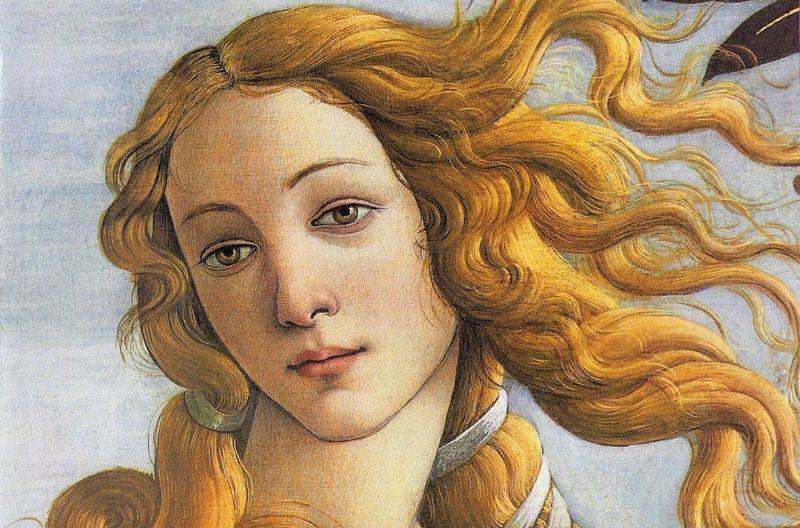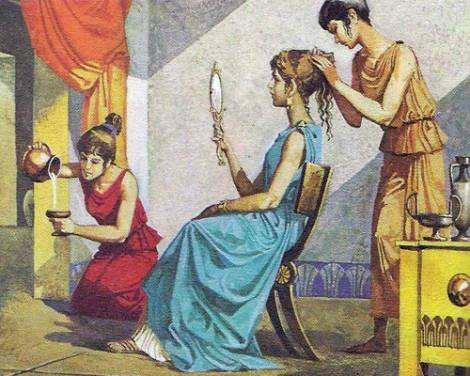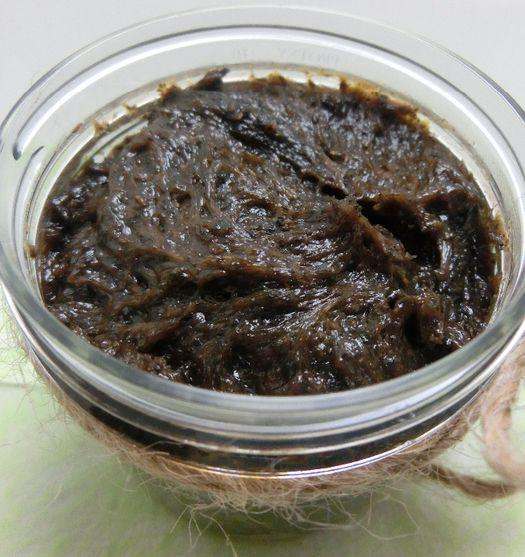Women have always wanted to be beautiful. Although hair extensions are a modern procedure, in ancient times they also resorted to all sorts of tricks and tricks to create long curls and interesting hairstyles.
Hairstyles are often seen as the calling card of every young woman. Hairstyles can be used to determine a person’s social status and clan affiliation.

The first attempts to improve the hair were made long before the advent of hair extensions. Wigs were used for this purpose.
For the first time they were used in Ancient Egypt. Not only women wore them, but also men. At the same time, hair was frequently shaved off. Using wigs, it was also possible to determine the level of wealth of the man, as they were made of different material.
It could be animal hair, silk threads and even plant fibres. Wigs were used not only for image, but also to protect the head from the hot sunlight. In the 18th century especially extravagant ladies even wove into their wigs elegant baskets decorated with fruit and flowers, and could also decorate them with stuffed birds and animals. The wigs were voluminous, some of them up to half a metre in size.
Their cost was high, so they were only worn by rich people and their entourage. The hairstyles were shaped for a long time, so they were generously sprinkled with powder. Sticks, most often made of ivory, were also used to maintain hairstyles. These sticks could be used to scratch a head that was itchy with lice.

Lice were widespread then, as water treatment at that time was rare, but everyone often wore perfume. Wigs remained at their peak in popularity for most of the 19th century. And in the 20th century came the first hair extensions, which were a humane way to achieve a makeover.
Hair extensions were pioneered by African women. It’s a well-known feminine fickleness: you want to curl straight hair and straighten curly hair. African women, like women in the world, want to straighten their curly hair. It’s not an easy thing to do, as hair structure is genetically determined.
And then they thought of a simple way to change that: they started braiding tight braids around their heads and tying locks of hair to them. This wasn’t a viable option for European women, as their scalps are more sensitive and the tight braids and donor locks can cause headaches and sleeping problems. In order to allow European women to lengthen their own hair in a safer method, hair extensions using keratin and glue were invented.
In the 20th century, a hairdresser named Simon Forbes came up with a new way to lengthen hair, using strands of artificial curls. He attached them by separating them about one centimetre from the roots. For this invention he won an award from the British Hairdressing Society.

During the nineties hair extensions became very popular and to this day hair extensions are still in great demand and undergoing continuous development. There are more and more new methods and ways of hair extension.
Thanks to modern technology, hair extensions have a very natural look and are easy to maintain. Beautiful hair, as it was many centuries ago, is a woman’s calling card. It helps create a feminine and unforgettable image.
Table of Contents
Hair care history – where does it all begin?
Hair is a reflection of feminine beauty. From the very beginning and up until the present day, women have striven with all their power to achieve beautiful hair colour and condition.
Long, thick hair – what could be more desirable?
Today, there are so many products available to cope with every hair problem, but how did women used to do it?
You’d be surprised what a fashionista once had an arsenal of hair care products.
Cleopatra is said to have had great results with bear grease.
For hair growth
At all times – and especially in times of fickle fashion – women have wanted their hair to grow faster. The Romans rubbed decoction of walnut shells, the Chinese mixed honey with flour and made a mask, the French used nettle broths…. But there is nothing surprising about plant-based recipes, while there were some that today can make some people smile and others bewilder.

So, in order to make your hair grow faster, burn bees and mix the ashes with rose oil. Bees weren’t the only thing they did. Hedgehogs, rats and moles were burned, skin dropped by snakes was soaked, dried frogs and lizards were pounded. And this isn’t the Dark Middle Ages. This is the 18th and early 19th centuries.
In the nineteenth century, however, vegetable oils (olive, almond, chamomile and laurel) and animal fats (bear, goose, fox and skunk) were more popular as hair care products.
Wine can also be found in recipes to strengthen hair. It was added to various oils and used as a remedy for baldness.
Washing
Common soap was used as shampoo. Those were the rich people. Ordinary people washed their hair with kvass or sour milk.
Probably some of the first inventors of hair conditioner were the Indonesians. The thing is that an atomic mixture of rice straw ashes and husks with water was used there for washing. The mixture was great for cleansing hair, but it was also good for drying. Therefore, after washing, we had to moisturise the hair with coconut oil.

Other Oriental folk remedies for washing your hair are to boil quince peels, or you can soak aloe stalks in cold water.
And Indian women used to actively rub herbal concoctions into their hair when washing it, especially from chumpa, the Indian flower from which oil is made for rubbing into the hair.
Changing hair colour
Women started dyeing their hair more than three thousand years ago.
Recipes from Assyrian herbalists dating back to 2177 BC describe some of the cosmetics used for this purpose. One of these specific recipes describes the use of cinnamon (cassia) and leeks for dyeing hair.
Originally, hair dyeing was used to indicate a special status, a person’s position in society or for sacred purposes.

In ancient Egypt, dark brown and black hair was considered the most popular colour for its association with power. Hair dyeing and creating hairstyles were not the privilege of commoners. As early as the 1200s B.C., to make hair darker, some Egyptians used kohl (a mixture of soot and other ingredients) and henna (dye from dried leaves of the lavsonia plant). Other naturally occurring dyes have also been used to add new shades to natural hair colour and make hair colour more vibrant. Some of the Egyptians, including Cleopatra, even used wigs to make their hair darker.
In ancient Greece the sophisticated sophistication of the look was accentuated with ash and gold hair tones. Scented powders with a tinted effect were used for dyeing.

Blond hair was valued in Ancient Rome. Roman women aspired to blond hair and used not only wigs, but also special ancient methods and means of hair lightening. The dyeing composition included various herbs, quince and ashes. After treating hair with a lightening agent, it was additionally necessary to expose it to sunlight. In other words, one had to sit under the scorching rays of the sun for more than an hour to get the effect.
To protect the face, they wore the so-called “Solana” – hats with large fields, but without a brim. ancient Roman “techniques” of hair bleaching became even more popular after the appearance of blond German slave girls, whose blond hair was the envy of Roman women. Formulations based on lime, vermilion, talcum and beech ash were used to lighten hair.
Today, we’re fortunate enough to be able to buy just the right haircare product, without having to spend half a day just washing our hair. Before the invention of shampoo in 1903, hair washing alone required a fair amount of skill and dexterity.
Mass hair extensions began in the 1960s, pioneered by a man named Simon Forbes, and became more widespread later (in the 1990s). That said, history has it that hair extensions can only go so far back in time, thousands of years before our own era.
Collected by collectors (raw material collectors) and cut from living people for a fee. A hair cut is a cut of natural donor hair without capsules. Standard extensions usually require ~100 grams of hair in a cut. The cuts come marked virgin, which means that the hair was taken from one head.


